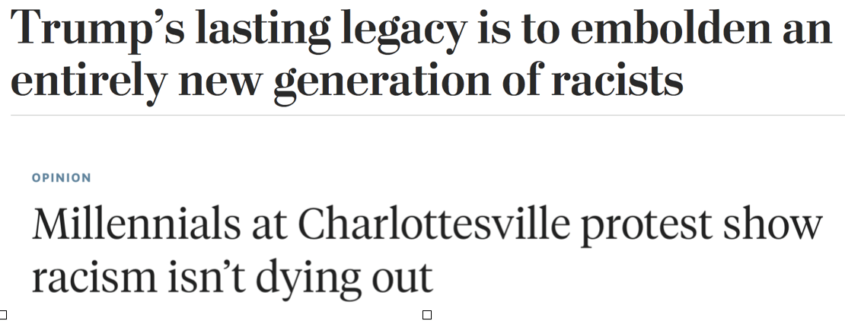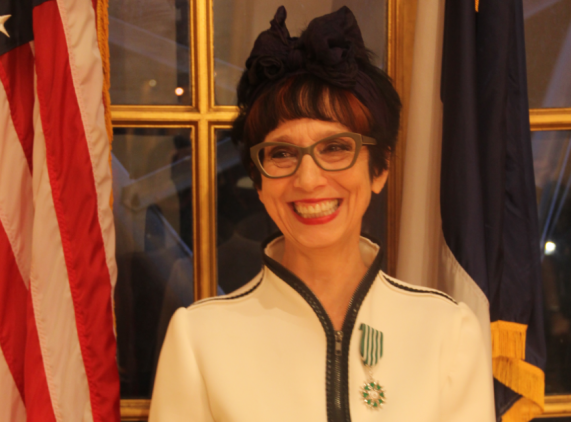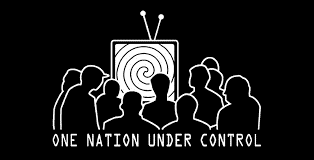Studying the Gentile: Fanciful Pseudoscience in the Service of Pathologizing the Covington Boys
“One person questioning the truth of the Holocaust is one too many.”
Karen Pollock, Holocaust Educational Trust, January 2019
In Studying the Jew (2006), Alan Steinweis’s slim, Harvard-published text on the scholarly study of Jews under the Third Reich, the author laments “the perversion of scholarship by politics and ideology” and its service in the goals of “exclusion and domination.” While some of the anecdotal material presented in the book is fascinating, especially its prosopographies of what one reviewer called the “clearly brilliant” German scholars who undertook such work, the overarching message of Studying the Jew is that one should, under no circumstances whatsoever, study the Jew. That Steinweis felt such a message was in any way necessary in 2006 is a testament to the same paranoia in which the fevered Jewish inability to let go of the past becomes the frantic injunction unto the Gentile to “Never Forget.” Steinweis’s limp appeals to contemporary relevancy aside, by 2006 the kind of patient and methodical Judenforschung produced by Édouard Drumont, Henry Ford, Hillaire Belloc, and the scholars of the 1930s, had indeed become a thing very much of the distant past — Kevin MacDonald’s remarkable 1990s trilogy being the exception that proves an otherwise solid rule. By the 1960s, Jews had effectively monopolized the study of their own history and sociology in the post-war, modern incarnation of “Jewish Studies,” and quickly followed a self-congratulating, navel-gazing, agenda-driven, victim-orientated trajectory in the same fashion as their later counterparts in Women’s Studies, Chicano Studies, and Black Studies. Serious critical study of the Jews vanished from academia and mainstream culture.
Curiously, however, around the same time that serious critical study of Jews vanished from campuses and newspapers, a new trend emerged: studying the Gentile. I was strongly reminded of this recently during the debacle surrounding the Covington Catholic High School trip to Washington D.C. The facts of this incident are now so well known that they need no further regurgitation here. It should suffice to mention that large sections of the media were incensed that the school’s students had enough self-respect to hold their ground against a group of ludicrous but abusive Black Israelites, as well as a Native American who apparently thought the best way to mediate the situation and reduce tension would be to bang his war drum and chant loudly mere inches from the palefaces. The aftermath was a true exercise in the media manipulation of anti-White hatred, something that seemed to reach a zenith when America’s most prominent African-American Zionist, and AIPAC house Negro, Bakari Sellers, heroically broke from stereotypes of ignorant Black thuggery to call for one of the White children to be punched in the face. Stunning and brave.
At the Guardian meanwhile, attention momentarily turned away from the beating of White children to the more sedate subject of brainwashing them. In an article titled “How should parents teach their kids about racism?,” the author, panicked by the children of Covington High, turns for advice to two academics working in the field of ethnicity perception among White children. Of course, both of these academics just happen to be Jewish. The first is Evan Apfelbaum, Boston University’s Jewish expert in the study of the psychology of the little goyim. The article states:
Evan Apfelbaum, an associate professor at Boston University’s Questrom School of Business focused on social psychology and diversity, agreed that it’s good to start teaching children about race when they’re young. “Having these tough, uncomfortable conversation at home in advance, in a structured setting, is one way to help prepare kids for facing these types of complex things in the real world,” he said. Parents can use such viral videos that demonstrate inappropriate behavior as an opportunity to have a conversation with their children about racism, Apfelbaum added. “When things go viral, there’s an opportunity for learning,” he said.
Unfortunately for Apfelbaum, the emergence of further footage from this particular event revealed that the opportunity for learning involved the knowledge that adult Black men are quite willing to scream “faggots” at White children, presumably because those children have the mysterious ability to speak in complete sentences. A further lesson was that elderly Native Americans are not full of profound wisdom uttered in the staccato prosody of so many film depictions, but are instead profoundly anti-social and fully prepared to shamelessly lie about school children in order to solicit media attention.
The second of the Guardian’s consulted experts was Dan Siegel, a truly ominous Jewish UCLA psychiatrist with a not-sinister-at-all interest in how the “remodeling” of the teenage brain can be interfered with in order to prevent in-group attachments:
The “remodeling” of the teenage brain into an adult brain entails four core changes: emotional sparks, social engagement, novelty-seeking and creative exploration — what Siegel calls “Essence”. The four changes represent an uptick in passion, drive to be a part of a group and a desire for new experiences that is normal for teenagers. These changes can be positive or negative, depending on how they’re fostered, Siegel said. The development also heightens what psychologists call “in-group, out-group distinction”, or the tendency to lump oneself in social groups, he added. When a person feels like their “in-group” is threatened by an “out-group” — people part of a group they don’t identify with — there’s a chance they will dehumanize the out-group. “Adolescents are equally prone to having this in-group-out-group distinction” as adults are, Siegel said. “Essence” exacerbates the distinction, and that’s what can be seen in the viral videos, he added. In these videos, there’s evidence of “emotion they don’t know how to control, collaboration where they give up morality to gain membership, novelty-seeking which drives them to do things that are really dangerous … and following ideals as they push against things that have them not think logically”, Siegel said.
This is probably one of the most fanciful pieces of Jewish psychological quackery I’ve ever read, and I’ve read a lot of it. Now that we have footage covering the entirety of the episode in D.C., it’s clear that the young men from Covington Catholic High School showed great restraint and emotional control in the face of provocation and abuse, and the “smirking” student can be seen on camera urging his (compliant) fellow students to maintain order and not engage with the Black Israelites or other provocateurs. Siegel, meanwhile, claims he sees evidence of “emotion they don’t know how to control, collaboration where they give up morality to gain membership.” This is just a Jewish intellectual activist refusing to look at the footage objectively, and thus presenting an entirely false picture in order to pathologize those he feels a pre-existing antagonism towards.
Siegel’s nonsense, like a lot of Jewish pseudo-science, would be laughable if it wasn’t so obviously malicious. Aside from his ‘Essence’ scam, Siegel operates a pro-diversity “mindfulness wheel of awareness” methodology designed to brainwash clients into abandoning any sense of ethnic identity. In an interview with Forbes, Siegel explains:
You want to expand your “circle of identity” so that within the phrase “like me” you include a lot of diversity. What I would say is the plane of possibility is accessed more when people integrate consciousness. People are too confined, so they are excessively differentiated and not accepting the value of other life forms including other humans that do not fit into that initial high plateau of identity. What has been fascinating about doing the wheel of awareness practice — and I think this is consistent with some of the research about reducing some of the implicit racial bias [editor’s note: a field rife with failure to replicate] with mindfulness practices— is when people access the hub, they’re gaining more access. They are more readily accessing the plane of possibility and in the plane, there is no racism. In the plane, there is this experience of reality that embraces the fluidity of identity. That is, “you” are made up of people who are not your racial background. You are people who don’t speak your same language. You are people who of different religions. It’s not just that they’re different and that is okay. It’s that you are both part of the same sea of potential or the plane of possibility. What has been beautiful about explaining this is that people get a feeling of relief that they can now basically be in a state of — and not to get too gooey — love and acceptance.

Dan Siegel: “You want to expand your “circle of identity” so that within the phrase “like me” you include a lot of diversity.”








